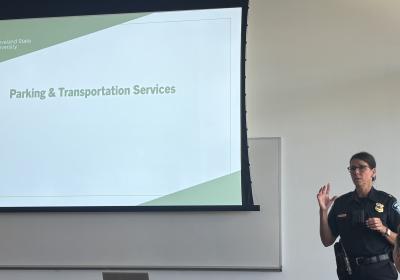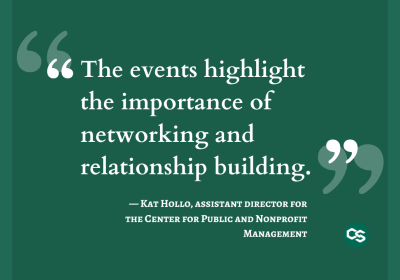
What's inside CSU 2.0, the university's blueprint for its future?
The blueprint for the CSU 2.0 plan was announced on March 26 by Cleveland State President Harlan Sands, outlining campus-wide changes to almost every area of the university.
The forerunner to the current plan was released in December of 2018 and was called “Statement of Strategic Priorities.” The original plan outlined development in several different areas over the following seven years and was put under review the summer of 2020 to create a new and improved plan, known as CSU 2.0.
When planning began for CSU 2.0, the university appointed five task forces to examine five areas: academics, administration, diversity and inclusion, athletics, and growth/innovation. This new plan highlights four themes relating to these areas with a number of different priorities under each theme.
Here is a look at each theme and the priorities CSU will be working on in coming years:
Theme 1: Seek distinction as a leading public urban research university
One of the major priorities highlighted in this theme is the addition of 200 new full-time faculty, replacing a portion of current faculty members. This process will be happening over the next five years and will bring numbers up from 500 to between 600 to 625 total faculty members.
The University is also using this to prioritize diversity and inclusion within CSU, aiming to set a national example.
Currently the University’s budget for research expenditures is set at $30 million annually. The administration plans to increase this to $50 million annually by 2025 and will be investing an additional $20 million to recruit faculty and to fund research overall.
The third priority under this theme focuses on changes to the individual colleges themselves.
The Colleges of Law, Engineering and Business will remain unchanged while the Colleges of Health Professions, Urban Affairs, Social Sciences and Education, and Arts and Sciences will be reorganized.
The College of Health Professions will be expanding their range of health-related fields and will be focusing on interactions between students and faculty. The College of Urban Affairs will also be expanding to include Social Sciences and Education to add more depth and discipline to the already nationally ranked Urban Affairs program at CSU.
The College of Arts and Sciences will be expanded to strengthen CSU’s academic brand and focus on disciplines that will shape the program and undergraduate studies.
In addition two to three new world-class programs will be introduced focusing on different fields including data analytics/data science, computer sciences and information systems, and smart/sustainable manufacturing. The programs will be brought together with resources from the Colleges of Health, Engineering, Business and Law.
Theme 2: Differentiate on student success and engaged learning
The first priority of this theme is the enhancement of student support in a number of different areas including admissions, registration, advising, financial aid and career services. The goal of enhancing these existing programs will be ensuring a seamless pathway for students during their time at CSU.
The university will also be creating new opportunities to help students get on a career path early on in their education through the creation of an Office of Career Development and Exploration. Corporate connector programs will also be developed to aid students in connecting with Cleveland businesses for co-op and internship opportunities.
More investment in pre-enrollment programs will be a priority the university will be working on as well, focusing on prospective high school students coming to CSU. This will expand the current Summer Transition and Enrichment Program, introducing a residential component, and will integrate with other summer programs including Cleveland Math Corps and Operation STEM.
The University plans to expand on residential opportunities as a whole and will be working towards doubling the percentage of students living on campus from 10% to 20%. The expansion will focus on building upon the Parker Hannifin Living Learning Community to enhance student success and to aid financial support of living on campus.
A major barrier that CSU plans to work on is financial aid assistance among students as well as creating new opportunities for students of color for academic success. This will be a high priority of the University and will involve in-depth analysis of disparities between students, focusing on representation and retention of minorities in the CSU community.
The final priority of this theme will be the review and updating of curricula to improve currency, relevancy, and efficiency throughout degree programs. Not only will this focus on broadening students’ knowledge and skill sets, it will also establish new degree programs that meet workforce and societal needs.
Theme 3: Strengthen anchor mission, become a beacon institution
Continuing on building out degree programs and increasing research development, the university will be hiring new faculty in fields relating to regional and economic needs. These fields will include health care, data analytics and cybersecurity, smart and sustainable manufacturing and applied social sciences.
Research will also be focusing on regional and economic needs and social and cultural challenges within the surrounding areas and communities. This will create diversity in research and will be encouraged to be a priority of research throughout CSU.
CSU hopes to increase its students numbers to 20,000 by 2025. The University plans to attract students in-state, out-of-state and globally through redesigned recruiting methods and the addition of new programs.
There will also be development in strengthening relationships between CSU and its peer institutions, organizations and the local community.
Theme 4: build financial strength, strengthen campus community
This theme focuses on cost-saving and revenue enhancing measures the University will be focusing on in the coming years as a result of revenue increase from higher enrollment and increased research funding. The potential cost reduction will be focused in the areas of administration, athletics and academic expenditures.
Administrative costs are projected to be reduced by $2 million through a full asset review and exploring methods to better service students and faculty. The net cost of athletics will be reduced through administrative adjustments and reductions in athletic scholarships and is predicted to cut costs by $1.5 million.
Academic costs will be reduced through administrative reductions and reducing general education courses that have low enrollment which projects $1 million in savings through these measures.
The University will also be reviewing their resource allocation model under the guidance of the chief financial officer. Redesigning the University’s financial distribution will focus on increasing investment into programs and services, and also improving faculty and staff salaries.
In accordance with all the enhancements to academics, research, faculty, and enrollment, the University is looking to make 17 major improvements to the campus itself. This will include the expansion of residential facilities, university partner connection spaces, and research labs.
Sands and other faculty members spoke about CSU 2.0 in a town hall meeting on April 15.
“We started this process a little bit after the pandemic hit,” Sands said. “We talked about the things we need to do obviously during the pandemic, but more importantly how we wanted to move forward as an institution and expand our brand.”
The implementation of CSU 2.0 will begin throughout the 2021-2022 academic year.
Editors' note: The Stater's report on initial faculty reaction to CSU 2.0 is here.






